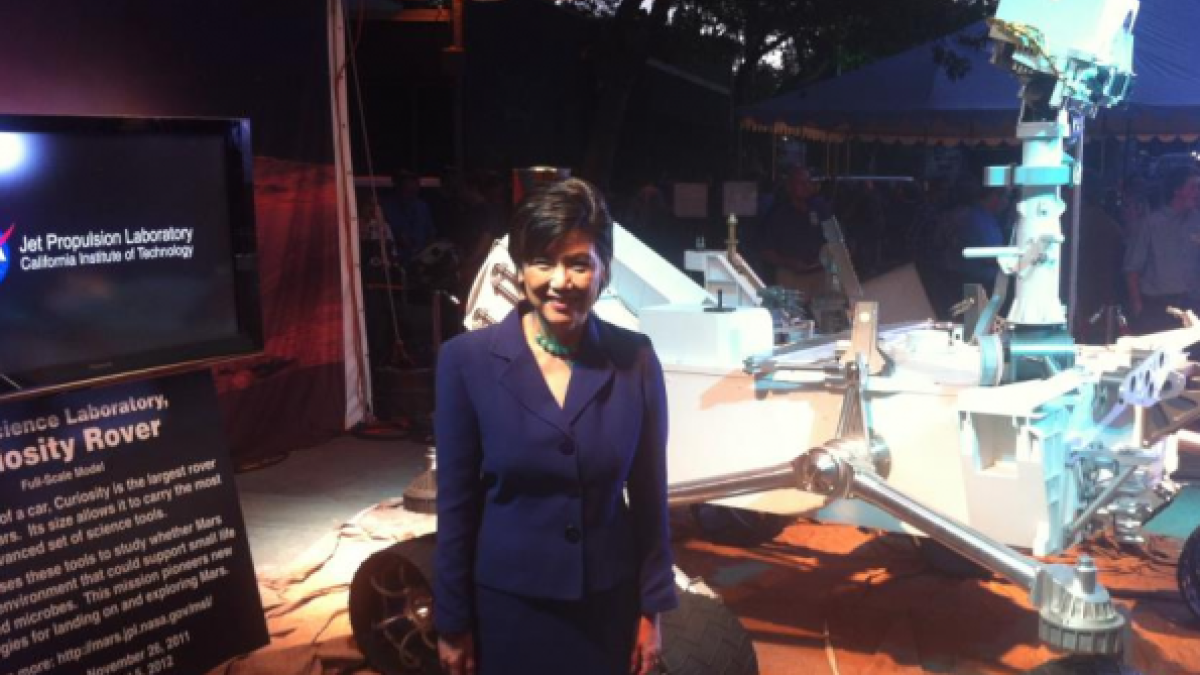Technology and Space Exploration

Rep. Judy Chu at JPL in Pasadena as NASA's Mars Curiosity rover landed on Mars.
Space exploration is critical to our understanding of the universe around us, and investment in NASA has spurred innovation and cutting-edge new technologies that create whole industries here on Earth. I believe we must continue to support space exploration because it is crucial for advancing science, which means economic growth and skilled job creation at home.
Space exploration is not just far-off science fiction for my constituents and me. It is a major economic driver here in the San Gabriel Valley, thanks to the work of the California Institute of Technology (Caltech) and the Jet Propulsion Laboratory (JPL). Caltech is an unparalleled center of education and innovation. It attracts the best talent and produces the brightest minds in the world. It is also a major generator of spin-off technologies that not only boost our economy, but also help solve some of our most pressing questions and needs. JPL, which is run by Caltech for NASA, is one of the bedrocks of our community, and a global leader in space exploration. JPL's 5,000 employees help propel our national economy through scientific, technological and engineering inventions. That is why I am committed to supporting the vital, cutting-edge work that JPL conducts for NASA, like its missions to Mars.
Protecting Funding for JPL's Missions to Mars
The cutting-edge work provided by the NASA Mars program means investment in the economy and thousands of jobs – not only at JPL, but in spin-off industries and businesses, and throughout the community. That is why I support increasing funding for NASA's science and exploration programs in Congress's annual appropriations process. I have also testified before the House Appropriations Committee to emphasize the importance of JPL's work urge them to increase funding for the Mars program.
Thanks to these efforts, funding has increased for NASA's science programs. I am committed to fighting for the highest level of funding possible as these bills move through the legislative process so that the Mars Program can continue to plan for its long-term future and retain the talented people who have made it a success.
Supporting NASA Space Technology
In addition to backing the Mars mission, I also support scientific research and investment in other areas critical to Space Exploration. I advocated full funding and independence for NASA's Space Technology Mission Directorate, which is key to developing the next generation of advanced technologies – such as propulsion, robotics, satellite servicing, deep-space communications, power systems, and entry, descent, and landing – that will enable us to reach further into deep space.
Fighting for Cutting-Edge Science Like an Early Earthquake Warning System
Caltech is one of the leaders, along with the University of California Berkeley and the Universities of Washington and Oregon, in developing an advanced Earthquake Early Warning System (EEW) for the U.S. Geological Survey (USGS). This system issues alerts, enhances public safety, and reduces losses and emergency response times through rapid forecasting. Until now, most natural disasters have been predictable via advances in radar and meteorological technology. That means hurricanes, tornados, even heat waves, can be anticipated, people can take shelter, protect their property, transportation systems can shut down, and emergency services can activate auxiliary power.
But we have not had this same ability with earthquakes. Caltech and its partners are changing that through a highly advanced network of censors linked to an automatic alert system. So far they have achieved an impressive six second advanced alert time! This allows people to take protective action and trigger automatic responses to safeguard critical infrastructure. For example:
- allow people to drop, cover and hold on and grant businesses time to shut down and move workers to safe locations,
- give medical professionals time to stop delicate procedures,
- protect travelers by providing time for trains to slow or stop, for elevator doors to open, for bridge traffic to clear, for slowing or stopping traffic, and even stopping landings and take-offs at airports, and
- enable emergency responders to prepare by opening fire station doors and starting generators.
And now, the EEW is available to the public through the ShakeAlert LA app. I encourage constituents to visit http://www.shakealert.org for more information and to download this application, which can provide up to 60 seconds of warning before shaking begins. But in order to expand, and be even more effective, this system needs additional resources. That is why I have requested funds through the House Interior Appropriations bill for EEW expansion on the West Coast. This system is not only critical for our communities; it is also a pivotal model for other seismically active areas in the U.S. and abroad, with the potential to help save billions from fewer economic losses, damage to property and infrastructure, and critical injuries.